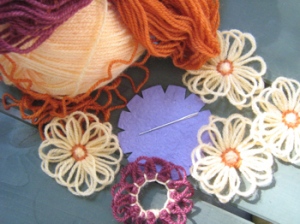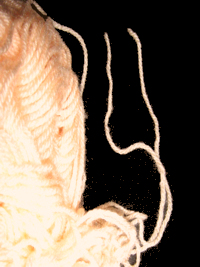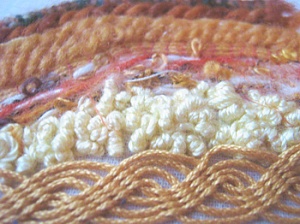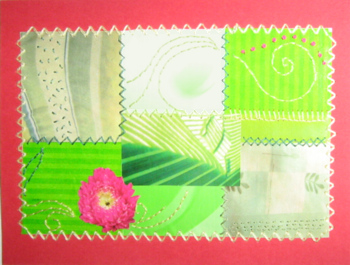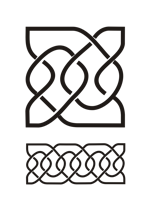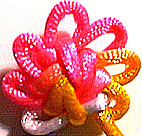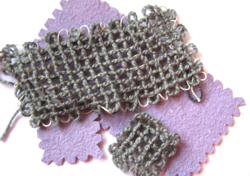
At the website of Knitting-and.com where I found the Crazy Daisies I also found the Butterfly Loom.
As always I didn’t want to buy something without knowing if I will use it ever again and cut my butterfly loom in different sizes from cardboard as you can see on the photo.
It worked out very well, but although I’m always coming back to different kinds of weave I think I’d never be patient enough to actually create something with this technique. It’s a pity.
;-)
Links:
Knitting-and.com: Butterfly Loom
via Knitting-and.com at The Butterfly Loom:
Patterns for the Butterfly Loom
Joining Butterfly Loom Motifs
You can also find a description, faq’s and a gallery of items made with their Butterfly Loom
Here at unikatissima:
Crazy Daisies


